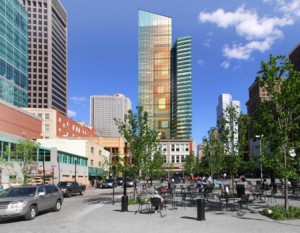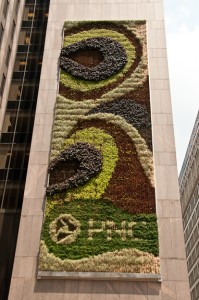
PNC recently released their 2011 Corporate Responsibility Report. Documents like this provide a window into how a bank thinks about its environmental and social impact. RAN has been paying close attention to PNC Bank and its approach to the energy industry for a couple of years, so I was eager to get my hands on the new report and see whether PNC is strengthening its commitment to communities and the environment.
The most eye-catching announcement in the introduction is the announcement that PNC will be building the “World’s Greenest Skyscraper” right in the heart of Pittsburgh. Avid readers of the Understory might recall that, in 2009, PNC built the “largest green wall in North America.” This is a commendable step-up in ambition. Extrapolating this trend, I look forward to PNC building the greenest city in the U.S. in 2013 and, before the decade concludes, PNC might just transform this nation to become the greenest on the planet.
But seriously, RAN has been saying for years that, while we like to see corporations green-up their buildings and their operational practices, the true test of a “sustainable” bank is where it puts its money.
If you compare this report to PNC’s first, released in 2010, there is a striking shift in the language used. Whereas previously PNC spoke of “Lending in support of economic growth,” now the message is “Lending to drive growth responsibly.” I’m hearing an acknowledgement of both the tough times we are living in and the role that the unchecked pursuit of profit has played to get us into this unsustainable economic crisis.
On page two, PNC gives an interesting trend analysis of energy sources. While the report doesn’t specifically say that PNC will be moving away from financing coal and oil, it does note that fossil fuels (except natural gas of course) are becoming less attractive as energy sources. I would like to see PNC disclose how its portfolio of energy investments compares to the national energy trends. The bank sounds enthusiastic about “deepening and broadening relationships” with those seeking to develop solar and other energy-efficient projects. However, there is no target stated indicating the level of financing that PNC is aspiring to provide.

On page three, a new “supplemental due diligence criteria” is outlined that appears to apply to all companies in extractive industries. There is specific mention of “horizontal drilling and hydraulic fracturing methods.” I suspect these are being addressed because of the bank head office being located in Pittsburgh, where hydrofracking has been banned. I like the broad category of “extractive industries,” but there isn’t much here about what this criteria looks like, and no mention of reporting.
PNC has restated its policy on mountaintop removal (MTR) mining. There is no change here and I have the same criticism as before: This policy has an identified performance standard — “coal producers who receive a majority of their production from MTR mining” — and it is unclear whether this refers to a company’s performance in Appalachia or across the United States. Prior to adopting this policy, PNC had substantial exposure to MTR companies and I would like to see PNC publicly report on the impact of the policy, as its competitors Citi and Morgan Stanley are now doing.
In summary, the 2011 PNC Corporate Responsibility Report demonstrates that this bank’s approach to energy is evolving. But there is still plenty of room to improve transparency around targets and reporting on implementation, and for PNC to be as ambitious with energy underwriting as it is with building green skyscrapers.